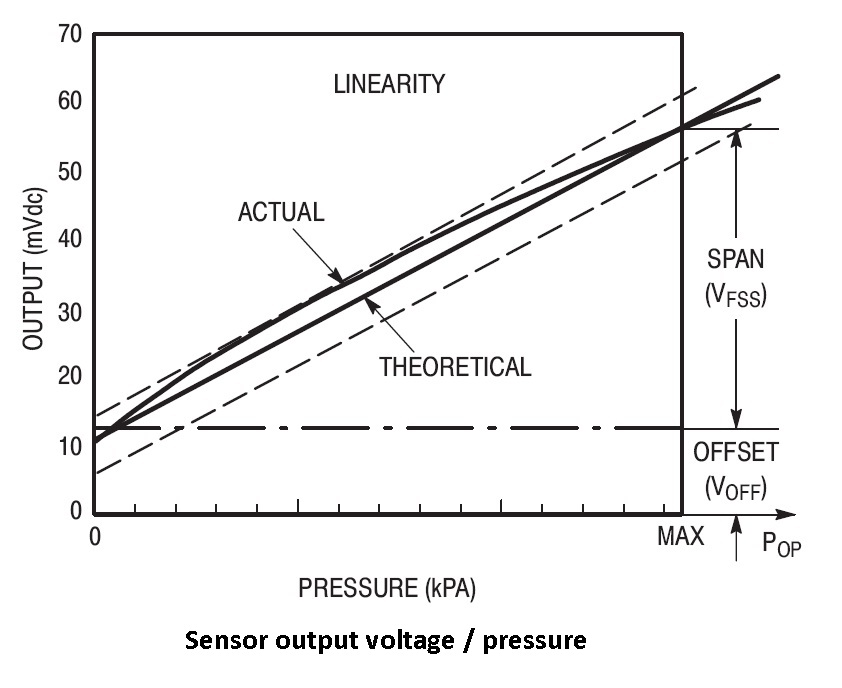
Correlation of systolic and diastolic blood pressure with cardiac function
Blood pressure monitoring devices play a vital role in the diagnosis and management of cardiovascular diseases. Choosing the right device and using it correctly could help for improve individual health management. By considering the advantages and disadvantages of each type of device, a better decision can be made to choose the right device. Choosing the right type of device depends on the needs and conditions of the individual. some Factors such as the accuracy of the device, how it works, appearance, technical specifications, and maintenance of the device are among the important factors on choose and use of blood pressure monitor devices correctly.

Digital sphygmomanometer performance and oscillometric cardiac signal
Today, most digital sphygmomanometers use the oscillometric method to measure blood
pressure. Every blood pressure monitors are using a part called “pressure sensor” which is
converting the pressure into an electrical signal. The following picture shows the
electrical signal of cuff pressure at the output of the sensor, as well as pulses with low
and high amplitudes, which are caused by the effect of heartbeats on the cuff and are known
as oscillometric signals.
The main job of digital sphygmomanometers is processing on the oscillometric signal for
diagnosis of systolic and diastolic blood pressure. In fact, the thing that ranks digital
sphygmomanometers in terms of measurement accuracy is the intelligence level at their
computing protocol.
And what are features on the oscillometric signal that could be find by the computing
protocol? The smart program first tries to find the highest heartbeat amplitude then based
on the predefined coefficients, the ratios of the pulse amplitude that occur before and
after the highest peak are named as systolic and diastolic pressure, respectively.
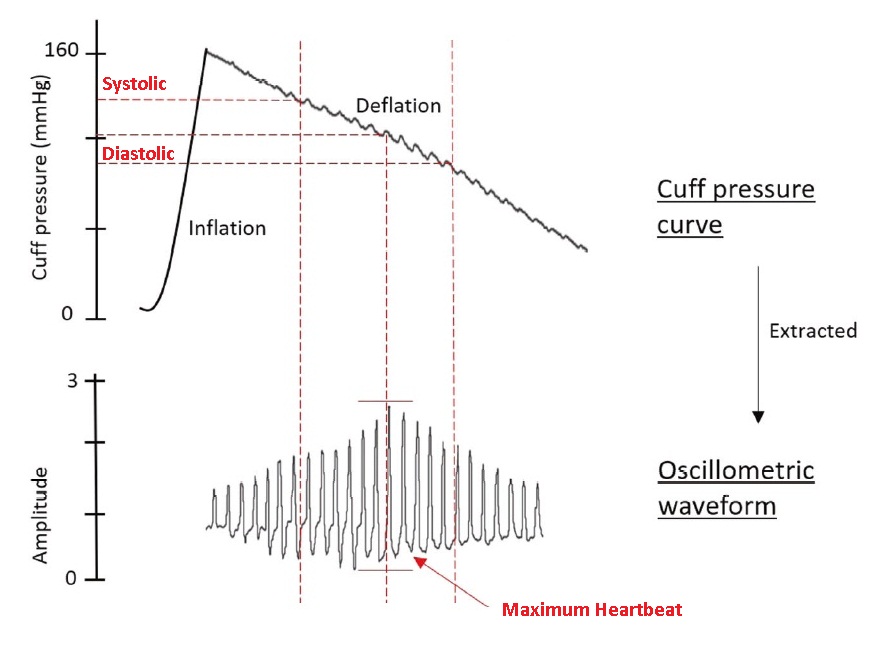
Study on two methods of measuring "falling pulse (deflation)” and "raising pulse (inflation)"
why does the "raising pulse" method reduce both the pressure applied on the arm and also duration of the measurement?
In the first generation of digital blood pressure monitors, the measurement was done during
two or more stages. At the first stage, the cuff pressure increases with a high inflation
rate, and in the second stage, the pressure gradually deflate along with the detection of
both heart rate and blood pressure to the end of the measurement.
Meanwhile, if the person's blood pressure is higher than the initial default of the device,
the air pumping process will be done again to a higher level than the initial pressure, and
as a result the time and pressure applied to the person's arm will continue for longer than
before.
This method is called "falling pulse (deflation)”.
In recently years, with more research in the blood pressure measurement, it was found that
if the cuff pressure inflation with slower rate than the first method, then it could be
measuring blood pressure at the inflation phase. Therefore, a new method was invented, which
we call "raising pulse" (inflation). The measurement with the new method reduced the
measurement steps from two (or more than two steps) to only one step, thus the device
stopped the air pumping process as soon as the blood pressure was detected and this
shortened the measurement time and As a result, there is less pressure on the person's arm.
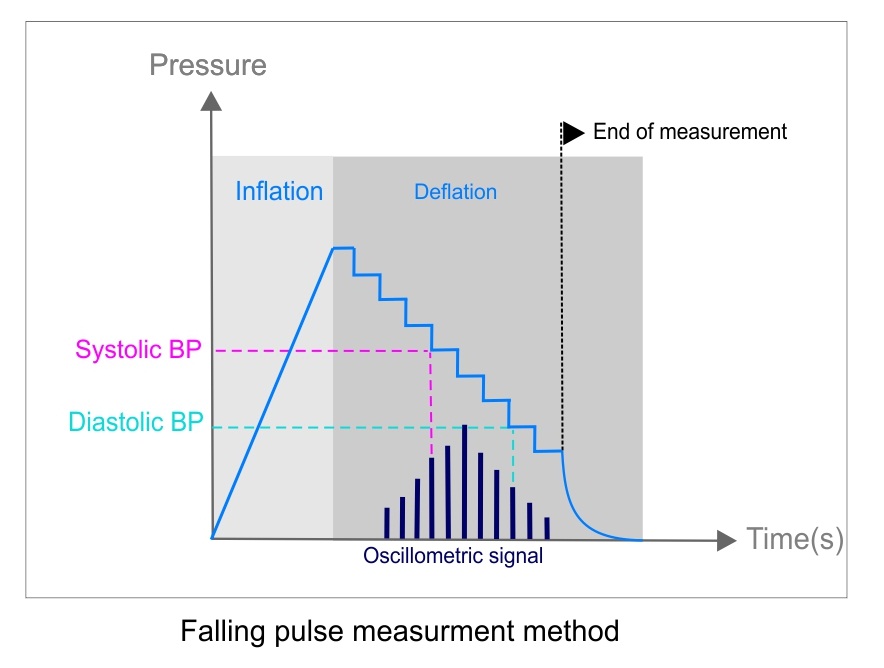
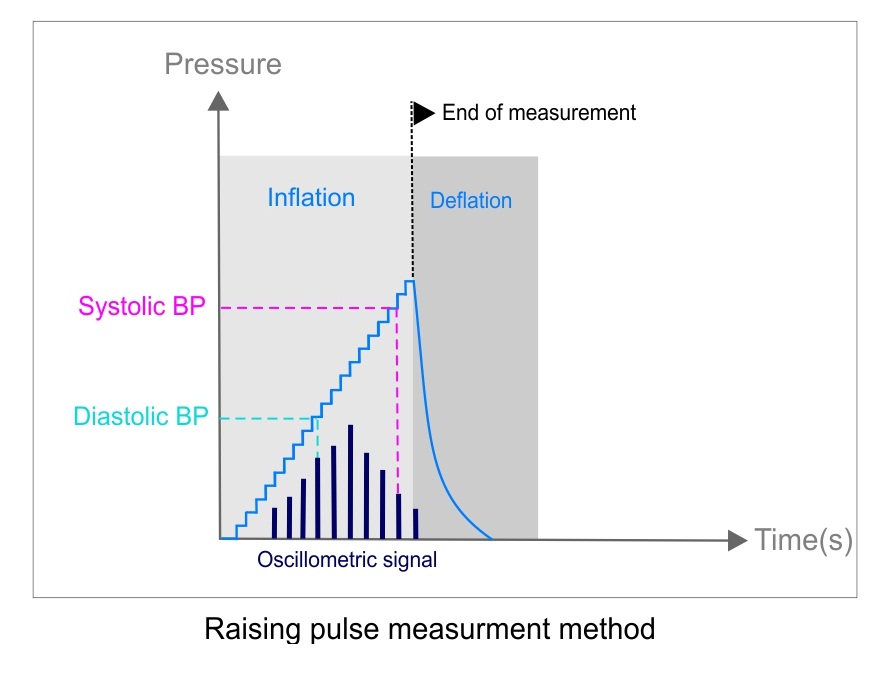
The reason for the difference in consecutive measurements
Now, with knowing the oscillometric signal that mentioned above, we know how the digital
sphygmomanometer calculates blood pressure. Assuming that the systolic blood pressure is 120
mmHg and the diastolic blood pressure is 80 mmHg, we are going to study on the oscillometric
signal related to several measurements from a single person to find out the reason for the
difference between results
At the following picture, we see the oscillometric signal of three times of measurement with
short time intervals. Pay attention, the most important difference between the first, second
and third measurements are related to the time of the happening on maximum heartbeat. In
each of the measurements, there are changes at the time of heartbeats in the intervals of
reducing the cuff pressure. This difference is due to the time interval between heartbeats.
Note that heartbeats occur randomly in the process of cuff pressure deflation, and it is
possible that the starting moment of each measurement is not the same as the previous times,
so we will see small changes in the sequence of measurements.
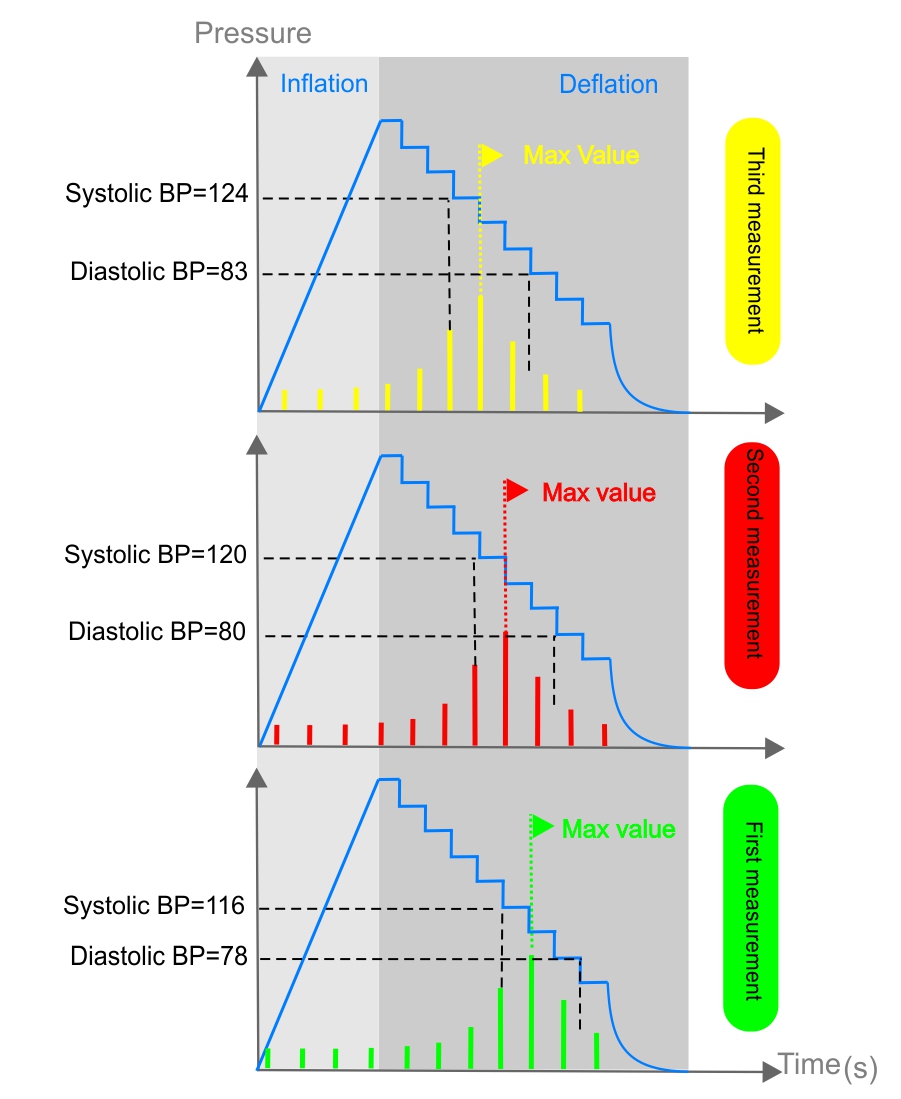
The effect of air pump’s internal silicon diaphragm to silent performance
The air pump in the blood pressure monitor is responsible for inflation of cuff pressure and
for this purpose it uses a small electric motor. The rotation of the engine axis causes the
transfer of the rotational motion of the internal propeller, which acts as a wind generator.
The passing of the wind through the rotating blades of the propeller produces an abnormal
sound, which is amplified and disturbing due to the placement of the air pump in the
enclosure.
If we replace the impeller inside the pump with an acceptable silicone plate or the
so-called silicone diaphragm, thus the wind instead of passing between the blades of the
impeller will generation done only on one side of the diaphragm with its vertical movement,
so the sound of the air hitting the propeller faces is not heard.
By using pumps equipped with silicone diaphragm technology, NABZSENSE Super Silent blood
pressure monitor is able to provide you with a completely different experience in blood
pressure measurement with unparalleled peace of mind.

Relation between nonlinear performance of the pressure sensor and measurement accuracy Necessity of periodic calibration of the sensor
Pressure sensors mainly have nonlinear behavior at different pressures. In simple terms, the
sensor output level per 10 mmHg changes is not the same at different pressure. Higher
pressures to lower pressures make different steps. Also, changes at temperature and humidity
of the environment are another factor that effected to the sensor output.
To ensure that having a correct value to output of the sensor by changes on environmental
conditions, it is necessary to apply compensation process by the blood pressure monitor
manufacturer.
Another important factor that must be considered is the change in the behavior of pressure
sensors, which deviate from their initial state due to long-term operation and exposure to
different environmental conditions. Therefore, it is recommended that the pressure sensor
calibration process be carried out yearly for home use and once every six months for
clinical use by sending the device to the factory or its authorized representative.
